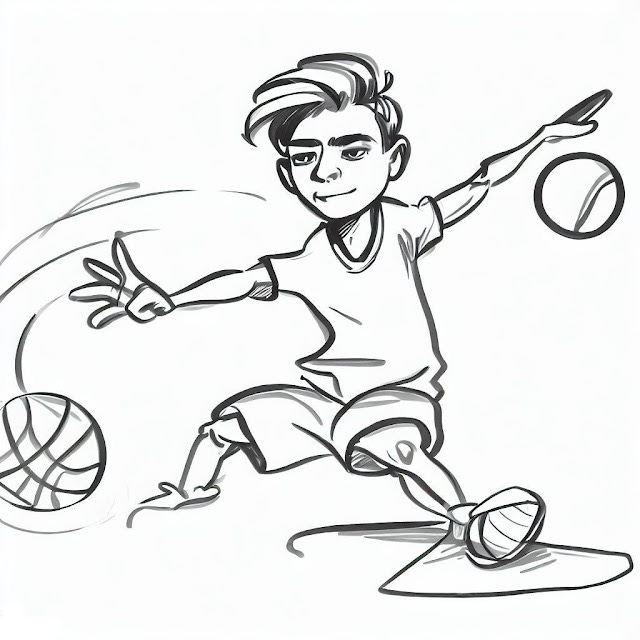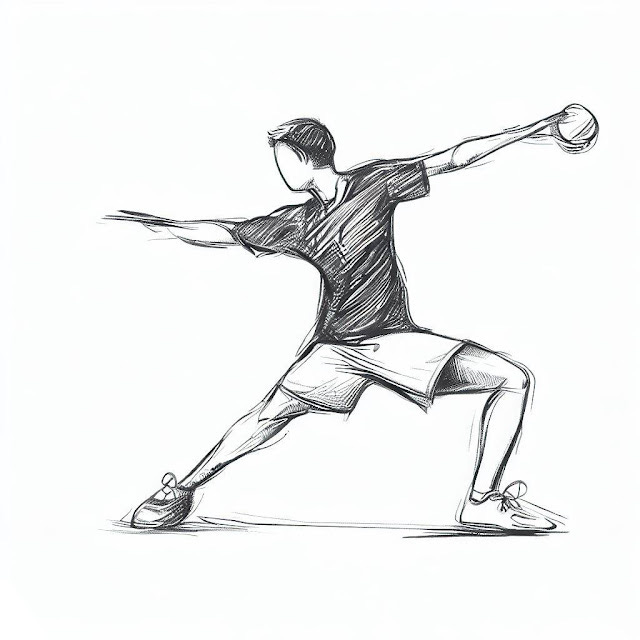How to Improve Your Hand-Eye Coordination and Why It Matters for Tennis
Hand-eye coordination is the ability to do activities that require the simultaneous use of our hands and eyes, like an activity that uses the information our eyes perceive (visual spatial perception) to guide our hands to carry out a movement. It is a cognitive skill that involves multiple brain regions and processes, such as vision, attention, and motor control.
Hand-eye coordination is essential for many everyday tasks, such as driving, typing, cooking, and playing video games. It is also crucial for sports performance, especially for racket sports like tennis. In tennis, hand-eye coordination helps you to:
- Track the ball accurately and anticipate its trajectory
- Adjust your body position and footwork to prepare for the shot
- Swing your racket with the right timing, speed, and angle
- Control the direction, speed, and spin of the ball
- React quickly to your opponent's shots and changes in the game
Hand-eye coordination can vary from person to person and can decline with age or even stagnate. However, it can ALWAYS be improved with practice and training. Here are some tips on how to improve your hand-eye coordination and why it will benefit your tennis game:
Credit: TennisMind.Org
Practice drills that challenge your hand-eye coordination.
For example, you can toss a ball against a wall and catch it with one hand, then switch hands (you can use your racquet on the floor). You can increase the difficulty by using smaller balls, faster speeds, or different angles.
Another drill you can try is to hit a ball against a wall with your racket while moving sideways. You can also practice hitting volleys or overheads with a partner or a coach. These drills will help you improve your reaction time, accuracy, and consistency.
Play other sports or games that require hand-eye coordination. For example, you can play ping pong, badminton, squash, basketball, soccer, or juggling. You can also play video games that involve aiming, shooting, or moving objects on the screen.
These activities will help you develop your visual perception, spatial awareness, and timing skills. They will also make you more adaptable to different situations and challenges.
Train your vision and attention skills. For example, you can do exercises that improve your visual acuity, peripheral vision, depth perception, and focus. You can also practice scanning the environment and switching your attention between different stimuli.
Some exercises you can try are:
- Reading a book or a magazine with small print
- Finding hidden objects in a picture or a puzzle
- Playing memory games or matching games
- Following a moving object with your eyes without moving your head
- Looking at an object close to you and then far away from you
These exercises will help you improve your eye movement abilities, aiming and binocularity all helping the brain and the body work together. Using things like balance balls and boards while training adds a HUGE benefit!
Credit: TennisMind.Org
Develop your motor skills and proprioception.
Proprioception is when your brain is telling your body what it's doing without us looking. For example, you can also practice feeling the position and movement of your body parts without looking at them. You can also do exercises that improve your strength, flexibility, balance, agility, and coordination.
Teach your students hand-eye coordination through games.
Hand-eye coordination begins at an incredibly young age. Together with visual input and developing fine motor skills, a baby begins to grasp and hold objects while fine tuning these movements as they grow.
You can help your young students build their hand-eye coordination skills by allowing them large blocks of time to play freely every day, as well as by engaging them in specific outdoor games and activities that develop this skill. Learning should always be fun!
The best part of this training is it is completely transitory. Improvement is an overall trait that translates directly to tennis.
Some games and activities you can try with your (age appropriate) children are:
- Playing a bean bag toss game
- Playing catch with different types of balls (softball, tennis ball, etc.)
- Playing horsehoes
- Playing frisbee
- Playing darts or archery
- Playing mini golf
- Playing board games or card games that involve matching or sorting
- Playing puzzles or mazes that involve tracing or drawing
- Playing arts and crafts that involve cutting, gluing, painting, etc.
These games and activities will help your children develop their visual tracking skills, fine motor skills, directionality skills, spatial concepts, etc.
Hand-eye coordination is a key factor for success in tennis. By improving your hand-eye coordination, you will be able to hit the ball more accurately and consistently, react faster and more efficiently to your opponent's shots, and enjoy the game more. So don't hesitate to try and work these tips and games into your next practice. Many can be done at home and have direct and immediate impact on the court!




